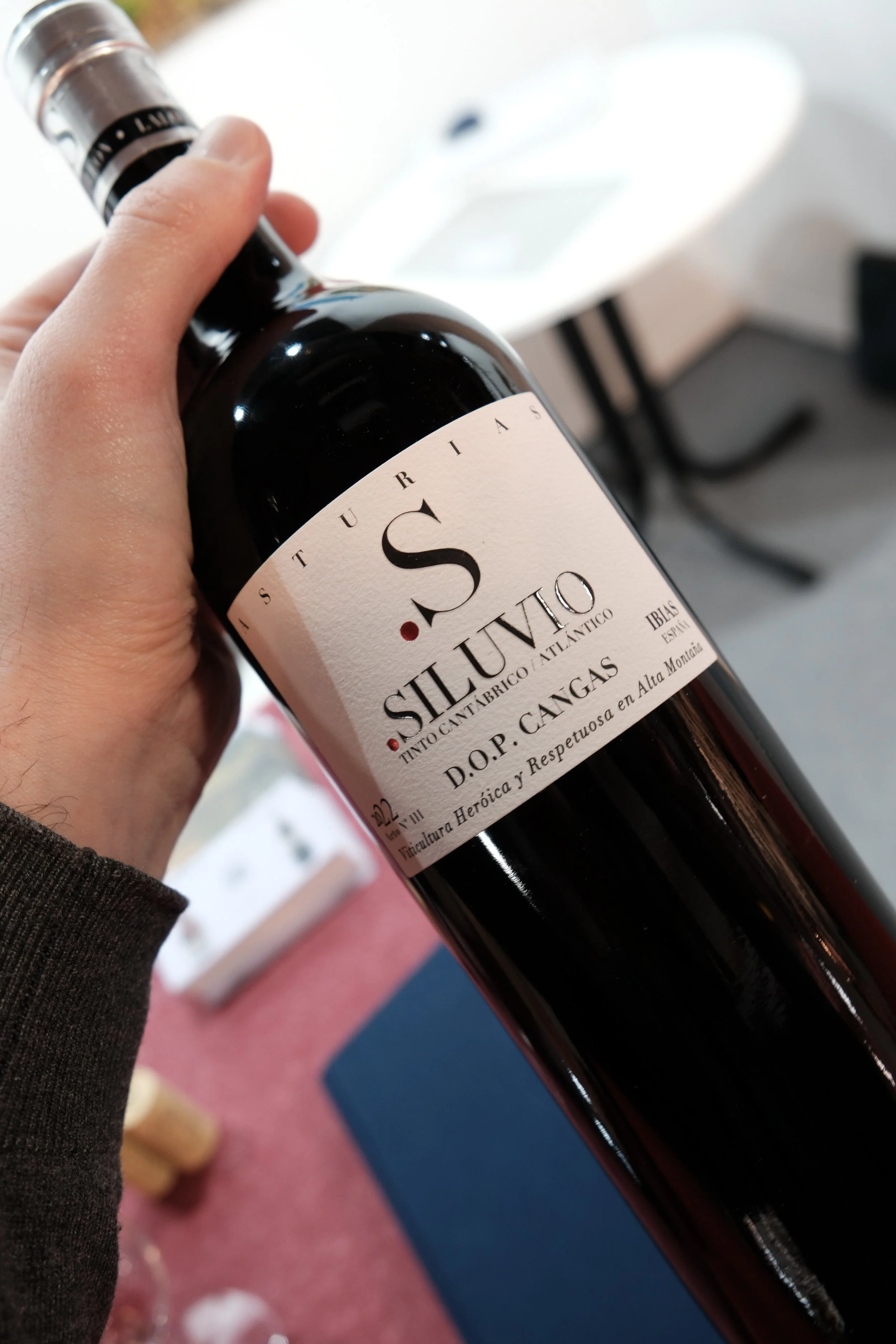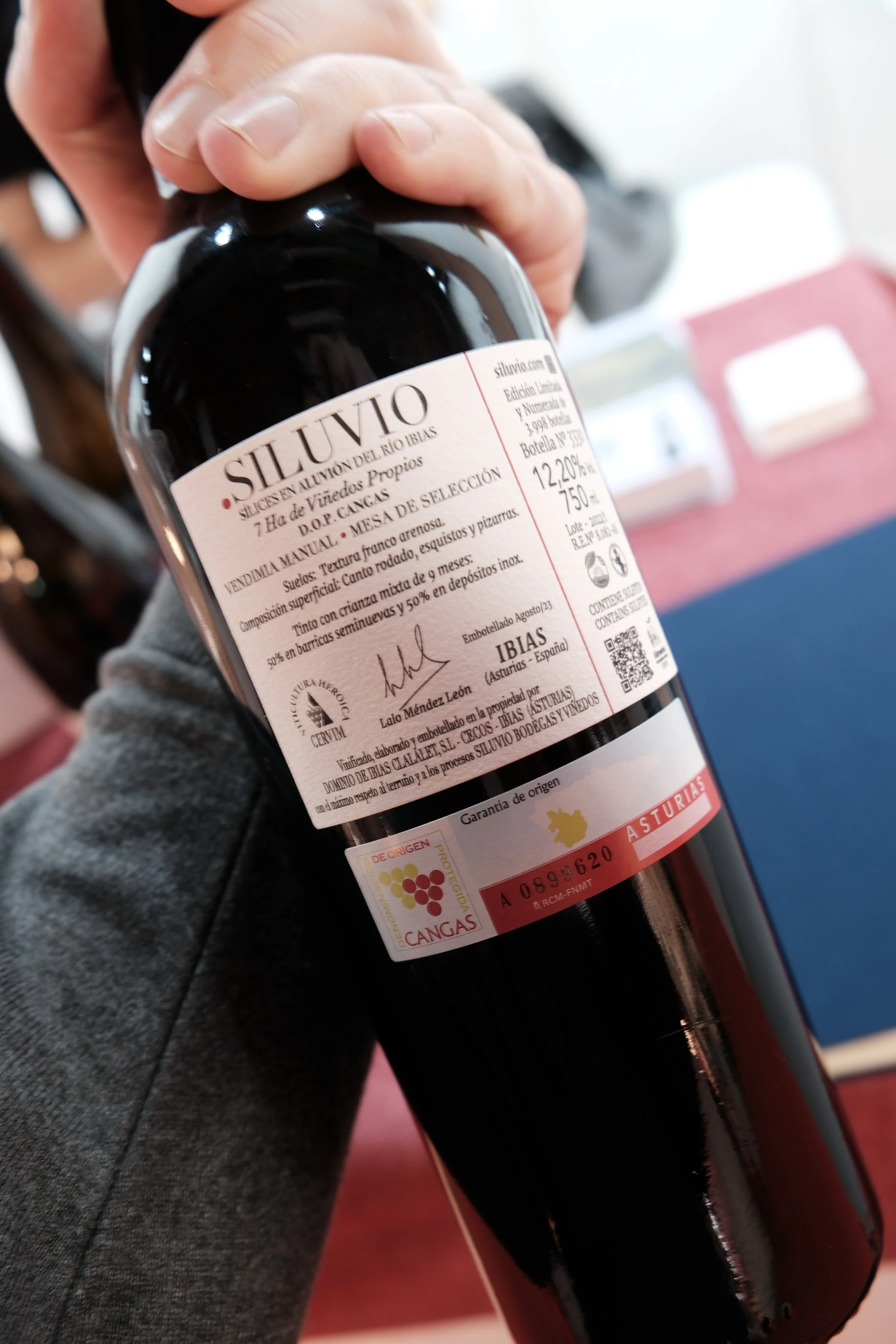Siluvio Bodegas y Viñedos: Reviving La Mezcla Canguesa
We are delighted to publish another guest post by Miguel Crunia. Originally from A Coruña, Miguel now resides in Edinburgh where he co-directs Fìon, a wine merchant specialising in low-intervention wines from Spain and Portugal.
In 2024 Miguel was ranked 7th among the 50 best sommeliers in the United Kingdom in the annual list published by Harpers. In March 2025, he was interviewed by Decanter magazine.
Miguel blogs at Atlantic Sommelier, where he recently wrote a longer feature on Bodegas Siluvio.
Tinto Cantábrico/Atlántico 2022, Siluvio Bodegas y Viñedos
DOP Cangas
ABV: 12.0%
Varieties: Carrasquín, Verdejo Negro, Albarín Negro and Mencía
€27.00 from Méndez León (2023 vintage)
For more information and orders - Email: siluvio@siluvio.com Tel: (34) 670 579 006
At this year's Fenavin, I came across a project that I found quite interesting. It's still in its early stages, and this is evident in the glass, but it also has enormous potential in terms of both terroir and ethos.
Welcome to Bodegas Siluvio, located in the municipality of Ibias, Asturias, an impressive natural enclave bordering Bierzo and Galicia. This is an area where viticulture might be considered an exercise in mountainous heroism, with very steep vineyards forming part of a winegrowing landscape that is often overlooked, as this region is part of the Cangas Denominación de Origen Protegida (DOP), the smallest appellation in Spain.
Winegrowing in Ibias on its many different slopes and orientations.
And it is here we find Lalo Méndez León, who has been in the wine industry for years, running his wholesale company. Driven by a passion for recovering the winemaking tradition of the area - which once spanned nearly 5,000 hectares before being reduced to just 60 due to the rise of the mining industry - he decided to invest in a property with land, where he could make his dream come true.
Lalo Méndez León in his vineyard with the Siluvio bodega in the background.
Although he had no previous ties to the area, he chose Ibias for its exceptional soils, favourable slopes and the sunshine it enjoys. The soils here are slate-driven, rich in silica and a mix of alluvial components - clay, sand and silt. Although these soils have a decent layer of organic matter, they force the vines to work hard, pushing their roots down as deep as five metres to access water.
Siluvio is a winery that currently owns a 7.5-hectare vineyard planted in 2017 with various indigenous varieties, although 80% of its production revolves around Albarín Blanco. Their single plot is located at an altitude of 500 m and has a 40% incline.
They don't use any pesticides or penetrating chemicals, although, due to climate challenges, they do need to apply small amounts of copper and sulfur. They are currently transitioning to organic farming, which won't be too difficult given its isolated location, free of the risk of contamination from chemicals sprayed by neighbouring wineries.
While still a young project, in only its fourth vintage, they have a clear focus on quality. They prefer not to release young wines onto the market, instead cellaring them for a minimum of 12 to 14 months.
As I mentioned, while their focus is largely on Albarín, what I really wanted to tell you about is their red wine - a revival of the traditional style of reds in the area, known as La Mezcla Canguesa.
Tinto Cantábrico/Atlántico, 2022
La Mezcla Canguesa is a traditional blend that brings together indigenous red varieties such as Carrasquín, Verdejo Negro and Albarín Negro. Unusually, the 2022 vintage also includes some Mencía, a necessary addition after a difficult growing season, during which a significant portion of their red grape crop was lost, prompting them to source additional fruit from local growers.
The wine fermented in open barrels where the grapes were allowed to macerate, occasionally wetting the cap. The aging process took place in used 225 L barrels. If you like Atlantic-style reds, this is a cuvée you have to keep an eye out for. The nose has a slight hint of VA (not at all acetic, but very subtle and controlled) that offers a bouquet with nuances of cassis, blueberries, gorse flower, juniper, bay leaf and eucalyptus. The palate is ethereal and very fluid, with a crystalline, mountain freshness. I loved it.



